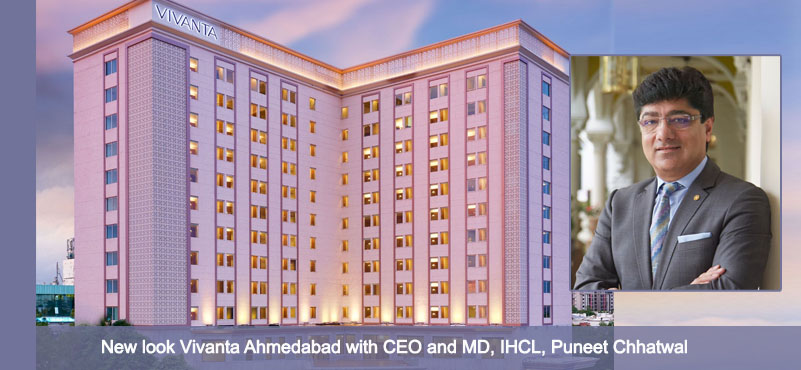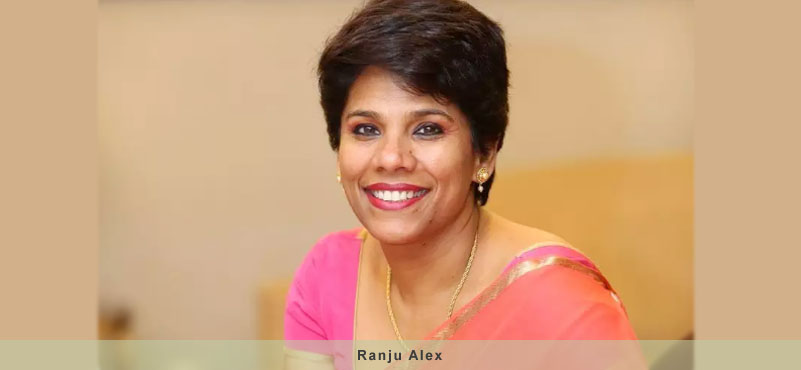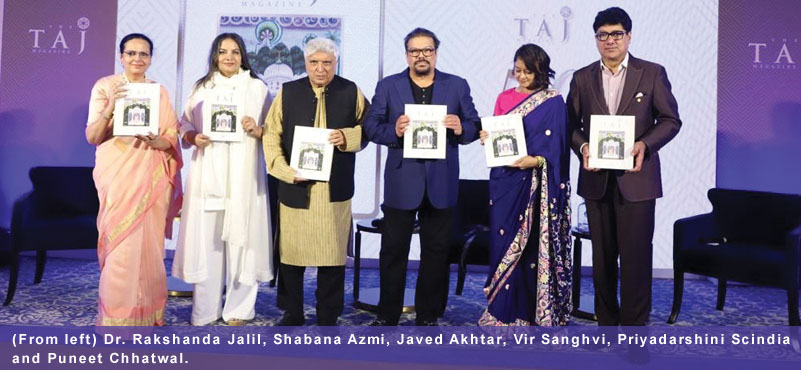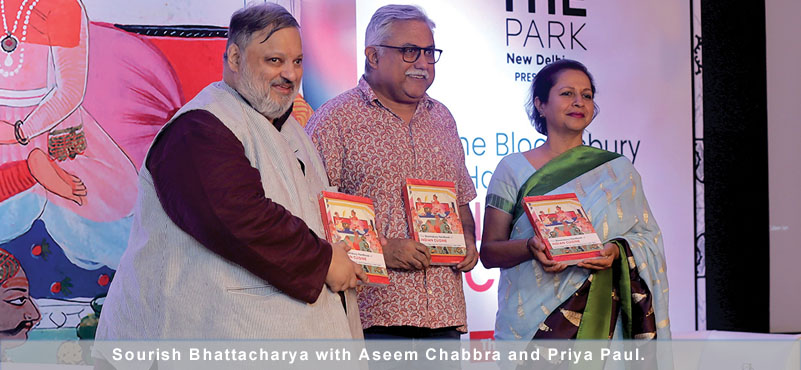In an exclusive interview with Destination India, IHCL MD and CEO, says the industry has the appetite for another 175,000 rooms in branded category during the next 10 years. He says supply is limited and given a definitive push from the government, at the centre and in the states, this can happen to fill the gap in this essential infrastructure sector.
NB: People are saying they have not seen this kind of a golden period. How are you seeing this phase in the development of India’s hospitality industry?
PC: I would agree but with abundant caution. I must equally recognize where we are coming from, an unprecedented period of global lockdowns, when everything had come to nought. We saw several lockdowns and several phased openings, followed by a gradual shift to where we have come now. Yes, we saw a steady climb from zero, to 10% business of pre-covid, then 30, then 40, and then 50, and then to 100; we may be now around 120%. But then, let us not forget that in these past three years, if you consider the increase in cost overall, we should have been around 120 only at this point in time.
But the good part of this recovery is that this is happening without much contribution from international arrivals. MICE is yet to see full recovery. But what has happened is that the domestic business, both corporate and leisure, have made a huge impact on India’s hospitality industry across the country.
Tourism for India has been a re-imagined reality, where a number of factors came into play. For one, covid made overseas travel out of bounds; those who wished to travel, had to do so only within the country. Another is that government promotions like “Dekho Apna Desh” helped people focus on domestic travel, prepare them psychologically to stir outside; the evolution of ‘bleisure’, combining both business and leisure; digitisation hit its peak to enable people to plan and book – digitisation cannot replace the human touch nor the relationship capital, but what it does is that it helps you to plan from home, and gives you the convenience to travel.
What also happened, and to a great extent, this worked wonders for hospitality, is the discovery of travelling by road. Earlier too, there was road travel but this saw a huge spurt among the youth, families, and friends; people learnt again to enjoy in groups, and if they felt some difficulty the first time, they felt it less the second time and by the third, they were happy to take road journeys of six hours and beyond. All of this put together, pays ode to the expression – ‘You Only Live Once’. In the aftermath of covid, people who had earlier said only save, save, and save, now were saying save but also enjoy.
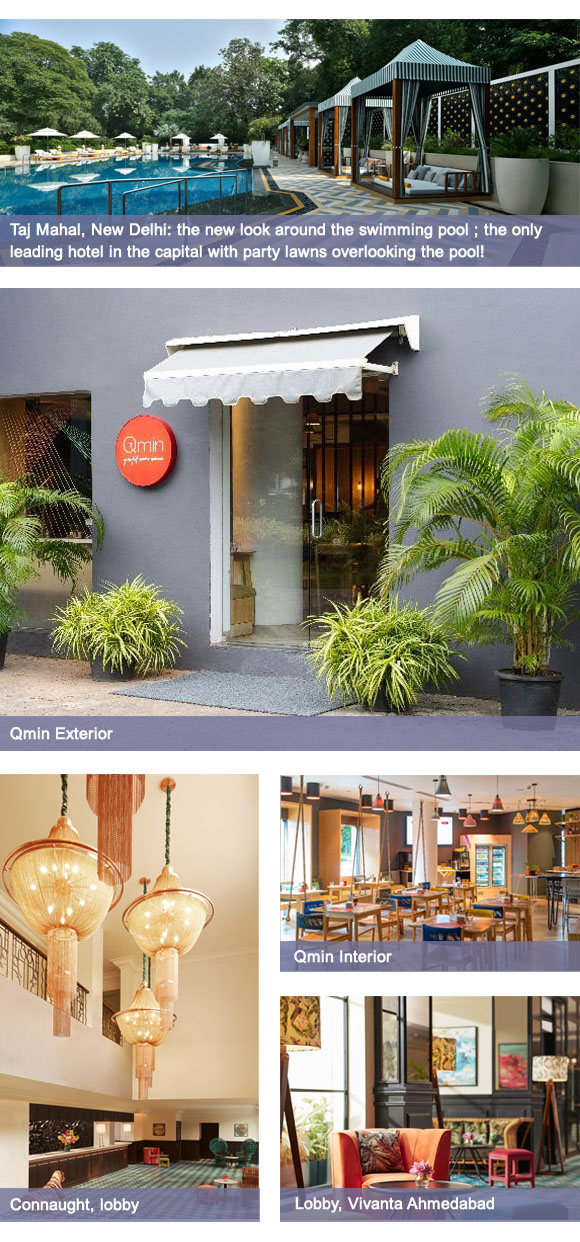 NB: You said the foreign traffic has not started yet….
NB: You said the foreign traffic has not started yet….
PC: Yes, it is only a trickle that has started and…..
NB: I don’t see much of supply coming in, and domestic has cornered the business, so do you think this domination by the domestic will continue….
PC: I have always been optimistic, especially as a representative voice for my industry. I agree that the supply side is challenged. Demand will see growth, especially as we are going to see the return of international travel. I therefore see a situation where demand growth will outpace the supply growth. To this extent, I cannot but agree that going ahead, the best is yet to come. As you had asked me, in your opening question, I can only share this enthusiasm.
NB: But if we are going to see such a demand outstripping supply situation, I fear the rates may high new highs…. And I feel worried as a consumer…
PC: I think quite differently on this. If you see the standards and the staff to rooms ratio in our country, and compare this with the best in Europe; if you compare a city like Mumbai say with a partner city like Stuttgart, just look at the difference in rates and what we provide in terms of services. Our room rate is very low in comparison!
NB: I fear the rates may hit the ceiling….
PC: That for me brings me to another ‘real’ situation. The real challenge for me is the perception of the industry, but if you look around, in real terms, across the country, only 16% of the branded supply is in the luxury segment; another 14% or so is in the upper or upscale segment. If you add these two, only 30% or less is in this segment. The rest is neither luxury nor upscale. I am not referring to the rest of the industry, the unbranded hotels across our vast nation.
So, when people go overseas, they want only the best of the best and are willing to pay. You cannot have a situation where people say they want the best but don’t want to pay. That is not being fair to those hotels who are aspiring to be the best globally. I am convinced that we have set benchmarks for more recognition globally. We have always had the ability to charge what is our due but have not done so.
Also do not forget that India is still very much a six-month destination, and we have a high seasonality issue to grapple with. In the luxury segment, this becomes unsustainable for the large companies.
I must also mention that what Covid has done is to create awareness about India as a medical destination. It is not just going to be about Make in India but also Heal in India. This is going to go beyond ayurveda and wellness into modern medicine and treatments. Given the cost of airfare, accommodation and travel, I suspect the cost of healing in India might still be 50% of what it takes in advanced countries. So, these new shoots of travellers will additionally fill our hotel capacity.
NB: How do you grapple with seasonality?
PC: I believe in the next 3 to 5 years, India will become a round-the-year destination. The appeal of the destination, the ease in travel that so many government projects in the infrastructure sector will help materialise, the programmes such as UDAN from the Ministry of Civil Aviation that are bringing new cities on the air map, all these factors will come together in creating a new environment for travel and tourism. The renaissance we are witnessing for railway stations, road and highway infrastructure that is being set up, all of this is all ensuring ease in travel, improving the travel experience for everybody, and this augurs well for tourism.
NB: In all this growth, we are also saying that hotel supply is limited. We will also need to augment our hotel supply pipeline. How do you propose that our country adds more rooms?
PC: That is equally true, I agree, and we are constantly working upon this, with the governments both, at the centre and in the states. We continue to lobby with governments to achieve infrastructure status for the hospitality industry at the central level and state level. Given infra status, hotels will be able to get loans cheaper; we need a longer moratorium as our industry is labour intensive with a long gestation; when we can borrow cheaper, we can build more. Presently, the law says hotels get infra status only in cities where the population is less than 10 lakhs; this cap needs to be done away with.
NB: There was also this cap, of a minimum investment of Rs. 250 crores, as well….
PC: That cap has been done away with…
NB: So that’s a major improvement in creating more investments…
PC: Yes, that’s a big welcome change for sure. In creating an investor friendly environment…
NB: But the big change towards infrastructure status, when do you think this can come around…
PC: What can I say? It could come around as early or as late as yesterday. We remain very hopeful and remain most optimistic.
NB: How many hotels and rooms can be easily absorbed additionally?
PC: See, today our hotel penetration per million is among the lowest in the world, among the tourism prominent nations. We have some 175,000 branded rooms in the country. This is very low. This needs to be augmented, for reasons of trust, safety and security. If we have arrived at this figure after 75 years, I think we could achieve the next 175,000 rooms within the next 10 years.
NB: You think this can happen? And there is no problem of resources?
PC: Money is not a constraint. In the last many years, hotels were basically owner driven, private equity was non-existent, institutional funding was never there, to this extent; business models have changed, we have enough developers and investors.
NB: Going forward, how do you see IHCL, for example, investing in the business and also pursuing your strategy for going asset light? Do you have the capacity to add that many more hotels, with partners?
PC: See, we are very confident of playing our part in both verticals. We have said repeatedly that we will strive towards a balanced 50:50 model of growth where properties are owned by us, and by third parties. I personally believe that purely asset light does not work for us, especially for the Taj brand. If we did not have The Taj Mahal Palace, or Taj Lands End, or Taj Lake Palace, these are either long leases with revenue share or owned properties. These are what make the Taj brand purely iconic. So, we will need to invest in our brand for the next 100 years. When we ramp up our inventory, it will be these iconic properties upon which we will build the strong brand that we already are.
NB: Talking of brands, do you see yourself adding newer brands in your portfolio. Some of the international chains have as many as 60 or less brands in their portfolio?
PC: Absolutely. But not as many for sure. This might be the strategy for others but not ours.
NB: So how many brands do you think is right for you?
PC: We have given guidance to the market that we will aspire towards 100 plus Taj hotels, 500 plus amã Stays & Trails homestays and 75 plus in the Vivanta and SeleQtions portfolios. When we have hit say 50 in the SeleQtions portfolio, we will then view the possibility of another brand. We must have critical mass in each before we embark upon newer ones.
NB: Where do you see a gap, if any, in your brand portfolio?
PC: See, there is always room for growth, many possibilities, given the diversity of India. For instance, we still do not have an all-inclusive brand, one that can move in sync with airline growth for example.
NB: What’s an all-inclusive brand like?
PC: One that says you buy at one point and everything else is paid for. Your airline ticket, your transfers, your room, your food, all purchased at one point.
NB: How about a new, smart, young brand….
PC: That is what Vivanta is meant to be. If you see any of the re-imagined Vivanta hotels, you will feel like you have stepped into just this kind of a brand… young, and bold. You will see this at Ahmedabad, the Navi Mumbai property… these are all a part of the new breed of Vivanta.
However, if you are talking of a boutique, lifestyle kind of a brand, this is a possibility but it is early for me to spell that at this point in time. We are definitely well positioned to launch that style of brand.
NB: I see a lot of growth potential for your SeleQtions brand….
PC: Indeed, because India is a heterogenous country, with many diverse existing architectural buildings. So, this brand does not impose particular design standards because my rooms are meant to be in one particular style. It allows for diversity though there are standards like fire safety, security, comfort level and more that are to be strictly met. It allows for diverse properties like the Connaught and Ambassador in Delhi and the Savoy in Ooty to flourish – not many brands can accommodate this diversity.
NB: Just another question, coming back to covid, a subject we have discussed a couple of times, the hospitality industry introduced a number of initiatives during those times. How many of these have survived or will last the next number of years?
PC: So, for us, at the Taj, there were two prominent take-aways. One was amã Stays & Trails and the other was Qmin. Only two days ago, we hit a century of amã Stays & Trails out of which 55 are operational as of now. With regards to Qmin, we took a major strategic decision of expanding Qmin into the QSR segment, and we took over 11 outlets of Tata Cha shops at the airport and in the city across Bengaluru. We are introducing Qmin to every Ginger hotel, where the all-day dining outlet will be Qmin. The Ginger hotels will become the cloud kitchens of Qmin.
During covid, we said Qmin would provide food from select restaurants from various city hotels, sent home when you order. Going forward, this is not a sufficient business model if you wish to scale it up. You can still order food from the restaurants on its menu, but we have taken it to another height with these measures.
NB: How about technology? What are you doing on this front?
PC: We took a decision a few years ago to get hooked onto the Tata Neu bandwagon. In the next few years, this would completely revolutionise how loyalty programs have worked in our country. Just imagine the strength and reach of this app. Just imagine the combined outreach of the airline and hospitality brands, of Croma and Tata Sky, just imagine our outreach. The best part of being a Tata company is that we can leverage the combined expertise and strength of our many companies and brands – Tata Digital is there for us.
NB: I received one of those ET notifications, one of those alerts that come every day, showing the market cap of different Tata companies. It said the market cap of IHCL has grown as much as 81% as now stands at Rs 46,000 crores? Is that right?
PC: I can only say it is not just an exciting industry but also a responsible industry, one that can ensure we give adequate returns to all our stakeholders – to our investors, customers, who can experience our services and offerings and stay happy, and to our dedicated and committed associates and staff.

